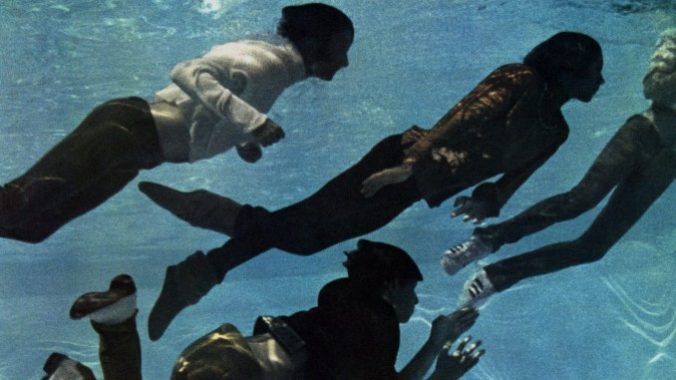55 Years Ago, The Monkees Fought the Man by Giving Us Head

In November 1968, several movies starring influential rock bands of the era hit theaters. After showing off their screwball skills in A Hard Day’s Night and Help!, The Beatles got animated (other actors assumed their voices) in the trippy cartoon musical Yellow Submarine. Also, The Rolling Stones were the stars of the avant-garde whatzit Sympathy for the Devil, directed by French New Wave icon Jean-Luc Godard. But perhaps the most ambitious cinematic romp a ‘60s band took that month is also the most forgotten, and most misunderstood: Head.
Head marked the feature-film debut of The Monkees, the poppy foursome that headlined their own NBC sitcom for a couple seasons. The band was really the creation of two guys, Bob Rafelson and Bert Schneider, who initially wanted to craft a show around the established band The Lovin’ Spoonful. When that fell through, they formed a band with English stage star Davy Jones and three musically-inclined guys—drummer Micky Dolenz, guitarist Michael Nesmith, and bassist Peter Tork—they discovered via a talent search.
From 1966 to 1968, this quartet (also known as the Prefab Four) were stars on the small screen and the pop charts. Episodes had them engaging in slapstick hijinks when they weren’t doing musical numbers that were basically the first music videos. Although they were killing the teenyboppers with such singles as “I’m a Believer” and “Last Train to Clarksville,” the hip and edgy crowd still saw them as a manufactured, mediocre Beatles knockoff.
After the sitcom’s cancellation, they went to work on Head (originally titled Changes), which is just 86 minutes of these guys admitting who they are—and how they would very much like to get away from that image.
The first 20 minutes packs a lot: It begins with Dolenz committing suicide by jumping off a bridge (he gets saved by two mermaids). Then, we get the group singing a ditty about their artificiality: “Hey hey, we are The Monkees / You know we love to please / A manufactured image with no philosophies.” They eventually perform live in front of screaming gals, whose slo-mo screams of enthusiasm are intercut with black-and-white shots of Vietnam War atrocities, including the infamous execution of a Viet Cong officer. The performance ends with the girls rushing the stage to get a piece of the boys, who are now gone and replaced with mannequins.
For a G-rated movie, Head is jam-packed with absurd, alienating antics. The film is mostly vignettes where the Monkees wander around a studio backlot, plow through movie genres (a war movie, a Western, a horror film, a boxing picture) and try to find ways to escape each one of them, usually running from a nefarious, presumably powerful figure (Golden Age leading man Victor Mature).
-

-

-

-

-

-

-

-

-

-

-

-

-

-

-

-

-

-

-

-

-

-

-

-

-

-

-

-

-

-

-

-

-

-

-

-

-

-

-

-








































